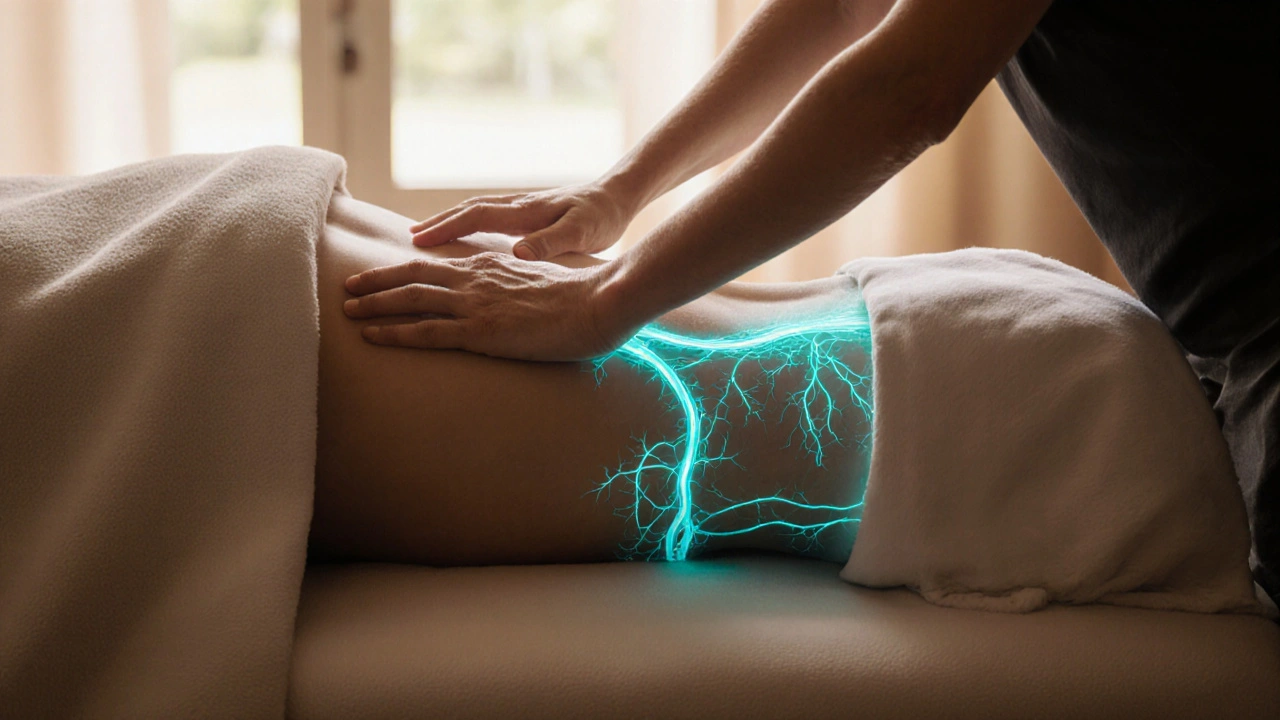Discover how full body massage can improve digestion, the science behind it, and what to expect from a session in London.
Digestive Improvement Through Massage
When working with Digestion Improvement, the practice of using bodywork to enhance how the stomach and intestines process food. Also known as gut wellness, it relies on stimulating the nervous system, improving circulation, and easing muscular tension that can block the digestive tract.
One of the most direct ways to aid digestion is Sports Massage, a deep‑tissue technique used by athletes to speed recovery and release tight hamstrings, calves, and lower back. By loosening these muscle groups, sports massage reduces pressure on the abdominal cavity, allowing the intestines to move more freely. The method also triggers the vagus nerve, a key player in the parasympathetic “rest‑and‑digest” response.
Aromatherapy Massage, a blend of gentle strokes and essential oils designed to calm the mind and body. Certain oils like peppermint, ginger, and fennel have been shown to stimulate digestive enzymes and relax the sphincter muscles. When combined with light abdominal massage, aromatherapy can turn a stressful mealtime into a soothing ritual.
The ancient practice of Thai Massage, a rhythmic, yoga‑like flow that stretches and compresses the whole body, targets the side‑bending muscles and the diaphragm. This pressure‑point work opens the “energy pathways” that traditional medicine says connect the liver, spleen, and stomach. Modern research backs that claim, showing improved peristalsis and reduced bloating after a session.
Even a regular body massage session that focuses on the back, shoulders, and hips can indirectly boost digestion. Tension in the upper back often mirrors stress in the gut; releasing that tension lowers cortisol levels, which in turn eases inflammation in the digestive lining. Consistency is key: weekly sessions keep the nervous system balanced and the gut moving smoothly.
Putting It All Together: A Practical Guide
To get the most out of massage for digestion improvement, start by identifying your main gut complaints—bloating, sluggish transit, or acid reflux. Choose a massage style that matches those symptoms: deep pressure for chronic constipation, gentle aromatherapy for acid excess, or a full‑body Thai flow for overall sluggishness. Communicate your goals with the therapist; they can tailor the sequence, focus on the abdominal region, and even add specific essential oils.
Don’t forget the after‑care routine. Drink a glass of warm water, avoid heavy meals for an hour, and do light stretching to keep the muscles relaxed. Over time, you’ll notice fewer trips to the bathroom after meals, less post‑dinner discomfort, and a calmer feeling throughout the day.
Below you’ll find a curated collection of articles that break down each massage type, share real‑world tips, and explain how to book the right therapist in London. Whether you’re a fitness enthusiast, a busy professional, or simply curious about a gentler way to support your gut, the posts ahead will give you actionable insight and help you choose the best approach for your digestion improvement journey.

